No products in the cart.
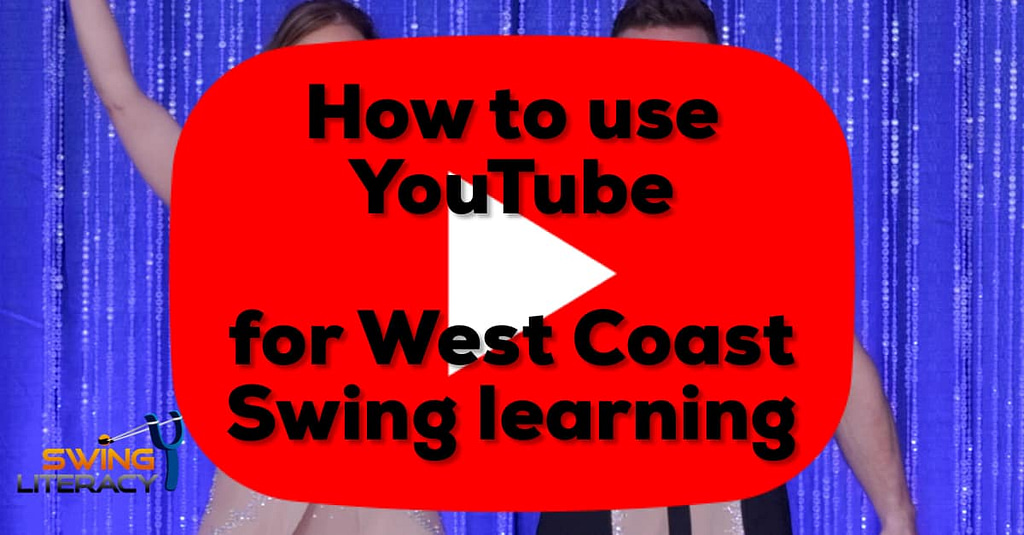
How to use YouTube for WCS learning
Reading Time: minutes remaining
I love that while our dance evolves as fast as technology, we use technology to evolve our dance.
YouTube is a great source of inspiration, but for the most part, a horrible teacher:
- YouTube doesn’t know what you need to improve
- You have to force yourself filter out the entertainment aspect
- It doesn’t provide the irreplaceable hands-on learning
But since this is the only dose of partner dancing we get these days, we need to get wiser about how we consume YouTube videos – raise our standards, set our filters, and plan learn some observation strategies to get more learning value when we want it. YouTube can be a powerful learning tool if you know how to use it for more than just entertainment.
To do this, I’m not going to provide a bunch of YouTube links to go check out. Swing Literacy teaches dancers how they can #trainWCSsmarter, so this article aims to help you #watchYouTubesmarter.
Instead, here’s the plan:
- First I’m going to explain how YouTube has been both the best and worst thing to happen to WCS, and one key mistake to avoid when studying YouTube dance videos.
- Then I’m going to describe how online learn has evolved and some pros and cons so you can make good decisions about where and how to invest your time.
- Next I will explain how to study different types of dance videos differently to build new observation tools you can and gain new perspectives you can use to improve your dance.
- Finally, I give you 16 concrete ways you can dramatically shift (and maybe validate) how you watch YouTube dance comp videos.
Let’s get started:
The YouTube Effect
YouTube has been the best and worst thing to happen to West Coast Swing. Best thing because it has given the dance (and the pros on the leading edge of the dance) global exposure and fame. Our famous WCS improv video from 2007 is almost at 2 million hits, and is the video, if not one of the videos that people constantly tell us was what hooked them on trying WCS.
But YouTube has also been the worst thing to happen to learning WCS. Because it’s so easy to teach yourself a wide variety of other skills and stuff on YouTube, some people assume they can teach themselves West Coast Swing too <audible collective sigh>. We all know this dance demands a specific and unusual type of connection that needs to be felt, not just seen. But new dancers or dancers from other styles drastically underestimate or ignore this element.
Personal story:
An international dancer who is now in AllStar/Champions once came to me as a newbie for his first ever private lesson in real WCS in the US. He was already a high level dancer in another dance style, and had taught himself his version of WCS by watching routines on YouTube. I was prepared for rough-around-the-edges, but I was not prepared for being roughed up! His connection was the hardest I have ever felt, rigid and jerky. I was so concerned for my safety during our assessment dance, I needed to stop him after only a few patterns. I explained fundamental connection skills using Swing Literacy skill development method, and he was a quick study, but he had no concept of what WCS connection was until he actually got to feel it live from an instructor.
It is not an obvious task to find a good quality video training series on YouTube about How to Learn WCS. There are several random introduction videos, but as in any topic on the interwebs, you have to DIY your own filtering and watch several lemons to get to anything good, and usually new dancers at this stage have not yet developed any kind of filter so they will naively consume and believe whatever ranks highest in the search.
Experienced WCS dancers expertly use YouTube to search for new material. The problem is that experienced dancers often mistake inspiration for studying, and try to collect moves that don’t have any instruction attached to them. As a result, when they try to copy a move, it usually takes longer to learn because they don’t yet have the learning skills to decode it yet or the physical prerequisite skills to move that way.
Modern ideal online learning
I’m not knocking video learning – far from it – we’ve been doing digital teaching for 17 years. In fact, as far as I am aware, we were the first in the world to offer a live online class series in 2006. (The tech was too tragically low quality at the time to continue it).
I’m just saying that there is a difference in the learning experience that you get from taking an online class or workshop (live or recorded) and simply binge-watching dance comp videos for hours.
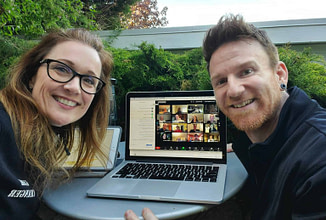
Full-length instructional DVDs (or downloads) used to be the norm for remote learning, but with society’s ever-shrinking attention spans, this format of instruction is no longer marketable. YouTube used to help us sell instructional DVDs, now YouTube has replaced that medium.
Smart teachers are now putting their content on YouTube (or other platforms) in the form of short “snack size” tutorials, which are a step up in length and depth from the average workshop recap. While these are more accessible and consumable, the downside of clips of this length also carry the risk of being out of context, so dancers might get confused about what prerequisite skills are needed to how they can apply the material to their dancing.
Of course the quality of this instruction will range, you never know the quality of a teacher until you try them, or get a referral. There are several other instructors out there offering instructional video/video learning products that have a significant amount of technique explanation, but the majority of those available are pattern-based. As specialists in making essential technique accessible and relevant at every level, we have over 100 technique and drill-based videos in our Swing Literacy vault, the majority of them filmed in 2020. These are available inside our Swing Literacy digital courses.
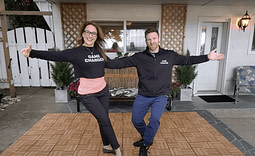
The main downside to any video learning is of course the lack of feedback – both from a partner and from a teacher. You might “learn” a new pattern, technique, or styling, but until you get a chance to try it on a live partner in a practice setting (not a social dance), you won’t have the context to put it to use or get the physical or verbal feedback that the connections of it feel ok.
Bottom line:
The best way to use any kind of instructional videos at any level is to study them first, then take the material you are working on to a live instructor to get feedback and guidance. This doesn’t necessarily mean live in person – a good teacher will be able to diagnose and offer corrections via live video conferencing. Even if you don’t have a partner, you can get feedback on things like your quality of movement, timing, rhythm syncopations, and body shaping.
While feedback is already built in to each of our Swing Literacy programs, we are preparing a something special coming soon that will provide feedback on a whole new level that will make you drool…
Studying dance comp videos
The videos that are most prevalent online are not instructional. They’re not even workshop recaps. They’re mostly routines, with some Jack&Jills/Strictlies.
Let’s look at what you can learn from watching each of these types of comp videos:
Jack & Jills and Strictly Swings
These improvised competitions show the true culture of West Coast Swing.
- They demonstrate the conversational agreement of the dance, the spontaneous musicality, and the language of partnering.
- They often include popular movements for the era as well as historical movements as a nod to the culture of the art form.
- These competitions are almost exactly what you will see when you go social dancing – they are a realistic reflection of the social dance called West Coast Swing.
- Best of all, due to the random partnerships, almost all the moves are socially leadable, and therefore study-able.
Studying these videos will give you a large sample of the dance scene – you can draw conclusions from noting the common elements among them, and you will start to develop your observation skills and pick up on more of the subtleties. It will give you examples of different styles of executing the same moves, so you can shop around.
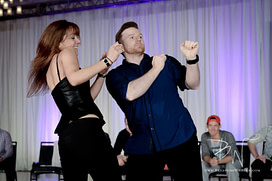
Going back and watching vintage clips in chronological order is a great way to learn about the history of the dance and its evolution. It’s always important to know your roots and learn the “why”.
Caveat #1: Remember that what you see is often very different from what you feel. Dancers could be smiling through the pain, grinning and bearing it, or secretly nervous. Some moves simply can’t be seen – their secrets are too subtle, or involve invisible connection tricks. You really need to learn these live.
Caveat #2: Watching Pro dance videos will not tell you anything about the teaching ability of those Pros!
Caveat #3: YouTube displays the good, the bad, and the ugly. Just because a video is on YouTube, doesn’t mean it’s worthy of imitation.
Routines
Choreography is the opposite of improvisation. Routines are 100% choreographed, pre-planned, pre-practiced with set partners.
Sure, routines will contain some socially readable basic patterns, but there are often times when couples will plan a movement to hit an accent in the music simultaneously without involving leading and following. In fact, there are several moves that routine couples will execute that are not physically possible to replicate with someone who does not know the choreography, and I don’t just mean lifts!
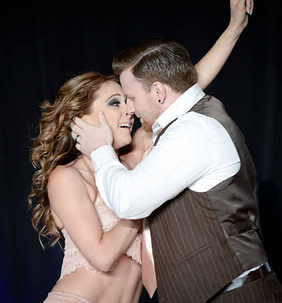
Yet there are YouTube addicts out there who don’t know the difference, try these moves on unsuspecting partners, and someone ends up getting frustrated, if not physically hurt.
| Personal story: While teaching overseas, I had a private lesson student who was a big fan, and a sweet guy. During the assessment dance, he suddenly stopped and enthusiastically asked, “Did you recognize that move?” When I looked confused, he clarified, “that was from your video! You know the one with all the hits?” I was stumped. Not only was I bewildered that he thought he should learn “my moves” for our lesson, but the move he was leading was so far removed from how that move is actually supposed to work, it was unrecognizable. He did not yet have the skills to execute that move – he didn’t even have the skills to learn the skills to execute that move. Which is where I started the lesson… |
Routines showcase the cutting edge of the dance, but they are a showpiece meant to entertain and be admired, not to copy socially. They intentionally push the boundaries, creating visual art to make a specific piece of music come alive.
Studying moves from a routine would only be useful with a regular partner, if you were planning on borrowing that move in your own choreography. It’s also a good source for studying showmanship, but only for stage performances. Learning choreography for a routine of your own will definitely improve your own dance skills, like balance, speed control, body awareness, etc, but routines are by definition, not social dancing.
Caveat:
Studying routines will not help your social improvisation or adaptability. We have noticed in some parts of the world, this distinction is not understood. Some dancers are copying patterns and entire sequences from routines they have studied, and use social dance time for competition practice: to practice these sequences with as many partners as can keep up. But they are not successful (and subsequently not happy) dancing with lower level dancers because they can’t “practice” on them. These dancers are training themselves in a language that only a handful of people can speak. These dancers have missed the point of social dancing. Don’t fall into this trap!
How to Use YouTube Wisely
Basic Stuff
1. Recognize bad videos to learn from
Any WCS instructional video where the woman is wearing a flouncy skirt and heels is probably a ballroom video. Skip it – it’s not the dance style you are looking for.
Many studio instructors will post their class recaps on YouTube for the benefit of their students only and forget to set the videos as “unlisted”. These weren’t meant to be taken out of context and are not intended for the public to learn from.
Workshop recaps are simply summaries provided by instructors at the end of their workshop. They only include keywords, main topics, and inside jokes as a reminder for those who attended the whole thing, so while it may be captivating, it’s not enough to replace actually attending the workshop or taking a private from those teachers.
2. Make personal reflections – Ask yourself, what is it that appeals to me about this dance? About these dancers? About this song? Do you notice any patterns emerging about your preferences across multiple videos? What “taste” are you developing? Have you been potentially limiting your own diversification by always gravitating to watching the same types of videos?
3. Bring your favourite YouTube clips to your instructor to ask for guidance in learning the moves you admire, then use a practice partner to get feedback and work on refinements.
4. Playlists – don’t just make playlists of clips you like. Categorize them into routines and improv. Or maybe even more specific lists such as “one-footed spins” and “lyrical songs”.
5. Watch in slow motion: you can change the speed settings of your viewer by clicking on the gear in the bottom right. Some quality might be lost, but at least you can see what’s going on more easily.
6. Don’t watch the whole pattern: Try watching the dance in 4-beat increments. These smaller chunks help you shake off any pattern bias and notice the movements themselves.
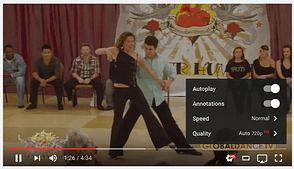
7. Mute the music: this allows you to focus only on the movement, without being wow’ed by the musicality. Try using mute and slow motion together.
8. Tape a piece of paper over the screen to hide the dancers’ upper bodies: focus on the footwork exclusively. Repeat for lower bodies.
9. Tally patterns of behaviour: How many sugar pushes does the couple do? How many triples? How many free spins? How many times are they caught pantomiming or mugging to the audience? What else can you tally? This can reveal some “tells” and bad habits.
10. Look for UMBRA patterns: Patterns that are most appropriate for social dancing usually are: Universally leadable, Musical, Balanced between leader and follower, Repeatable, and Adaptable to different levels. These are the ones you want most of in your repertoire. UMBRA patterns are our own concept nickname – you can see us explain and teach it live in a workshop at select events.
11. Want to just sit back, relax, and be inspired? No problem1 It’s good to have some entertainment for balance. Just set yourself a timer to rescue you from getting lost down the rabbit hole.
Get Nerdy
- Count the pattern:bpm ratio Many dancers fall into the trap of just cranking out the patterns. Watch some pro videos and notice how many patterns they complete during the song, as a ratio to the bpm of that song. Then compare one of your own videos.
- Watch vintage clips and identify moves you recognize – this gives a hint about which moves are wise to add to your repertoire. Like classic clothes, good moves never go out of style, but some are also valuable to have in your back pocket for those “theme contests”.
- Watch how the Pro handles each phrase change – just the phrase changes.
- Watch multiple videos of the same pro to note their signature moves and how they strategize in using them. Don’t limit yourself to one pro or one generation – repeat with a variety of pros. Note how they change their dance according to the music genre.
- Map the dance: write down each of the patterns in sequence. Identify each root pattern and note the variation used. Note beat extensions, invitation leads, and non-Swing movements. Don’t memorize and replicate this dance – just practice each pattern and/or variations individually.
When you do get a chance to go social dancing, don’t bring your YouTube to the social dance. Your social dance partners don’t know and don’t care what your next mission is in replicating that move from that video. Save the analysis and studying for practice sessions, and when its time for social dancing, let yourself relax and focus on the live humans. Remember, social dancing is a shared conversation, not a rehearsal.
Take-home message:
- YouTube is just a tool. You still need to learn how to use the tool to be able to take advantage of it for improving your dance.
- Nothing replaces live instruction, and not all live instruction is equal.
- Everyone needs feedback and coaching at every stage of their dance lives.
- Watch different videos for different purposes.
- To learn from watching dance videos, you need to watch mindfully, ideally with an observation plan.
Videos aren’t the only way to train your WCS online! If you’re looking for a comprehensive curriculum with high quality pedagogical methods that produces dramatic results in accelerating dancers’ progress, all wrapped up in a 40-hour world class multimedia course, you can be sure to find it here:
You must be logged in to post a comment.
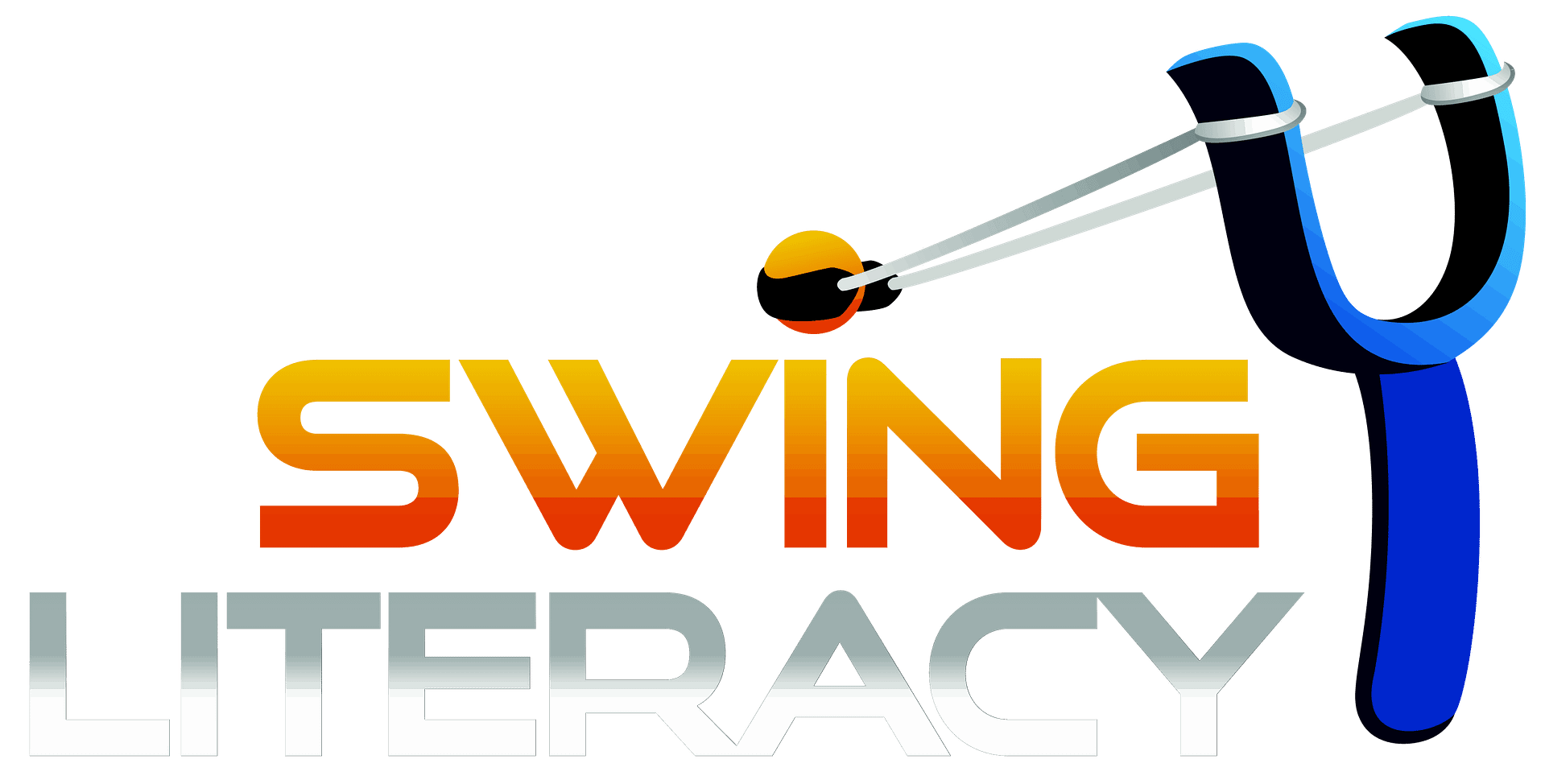
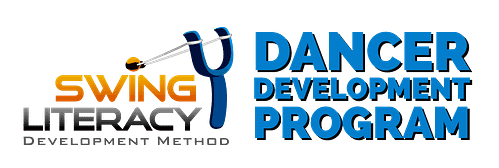

 I’m not knocking video learning – far from it – we’ve been doing digital teaching for 17 years. In fact, as far as I am aware, we were the first in the world to offer a live online class series in 2006. (The tech was too tragically low quality at the time to continue it).
I’m not knocking video learning – far from it – we’ve been doing digital teaching for 17 years. In fact, as far as I am aware, we were the first in the world to offer a live online class series in 2006. (The tech was too tragically low quality at the time to continue it). Of course the quality of this instruction will range, you never know the quality of a teacher until you try them, or get a referral. There are several other instructors out there offering instructional video/video learning products that have a significant amount of technique explanation, but the majority of those available are pattern-based. As specialists in making essential technique accessible and relevant at every level, we have over 100 technique and drill-based videos in our Swing Literacy vault, the majority of them filmed in 2020. These are available inside our Swing Literacy digital courses.
Of course the quality of this instruction will range, you never know the quality of a teacher until you try them, or get a referral. There are several other instructors out there offering instructional video/video learning products that have a significant amount of technique explanation, but the majority of those available are pattern-based. As specialists in making essential technique accessible and relevant at every level, we have over 100 technique and drill-based videos in our Swing Literacy vault, the majority of them filmed in 2020. These are available inside our Swing Literacy digital courses. Studying these videos will give you a large sample of the dance scene – you can draw conclusions from noting the common elements among them, and you will start to develop your observation skills and pick up on more of the subtleties. It will give you examples of different styles of executing the same moves, so you can shop around.
Studying these videos will give you a large sample of the dance scene – you can draw conclusions from noting the common elements among them, and you will start to develop your observation skills and pick up on more of the subtleties. It will give you examples of different styles of executing the same moves, so you can shop around.
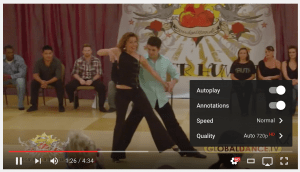 Watch in slow motion: you can change the speed settings of your viewer by clicking on the gear in the bottom right. Some quality might be lost, but at least you can see what’s going on more easily.
Watch in slow motion: you can change the speed settings of your viewer by clicking on the gear in the bottom right. Some quality might be lost, but at least you can see what’s going on more easily.
Great advice!
Great article! A few of my dance friends have told me that they’ve learned from videos, but I’d not quite fathomed how, so thanks for breaking it down.
Thank you for this, and all the other great material on this site. Even though my dance is Argentine tango I’ve signed up for you SLDM based on what I see here and what I feel I can learn from you about being a better teacher.
“Use a piece of paper to hide the dancers’ upper bodies.” I suggest to my students that they start learning a pattern (live or on video) by paying attention *to the upper bodies* and ignore the feet. Our dance is Argentine tango, and with feet there are four parts doing possibly all kinds of crazy things at high speed, but only two torsos moving much more slowly and simply. I want to see the relationships of the dancers to each other and to the room (not so much a concern for WCS). I also get a better sense of how the leader is creating or blocking spaces for the follower. In a way, it’s much like your nice article on Isolation Drills, where we simplify the material, getting the all important connection working right first.
Awesome article! I got pretty nervous reading at first when it said something like “learning from you tube might be the worst thing you can do for your dancing”, as this is my only real source of learning at this point. I live in a pretty small town, where WCS is virtually nonexistent. I have never seen a WCS lesson offered anywhere, and have almost never seen anyone doing WCS as its usually all country swing (maybe a couple people at the bar doing ECS). Luckily my saving grace is i was active in taking frequent weekly swing lessons before moving (so I have the building blocks to break down and figure out lead cues not obvious in a video), and we only practice with a lead and follow, never alone.
When we find patterns/routines we like that we want to learn it usually takes us about 20 minutes to break down each pattern after re watching it over and over, and figure out the best way to lead through it. After we can actually make it through the pattern, if its even a bit difficult ill usually have the follow close her eyes for the whole pattern as we work through it more so its harder to back lead, and she can focus on just feeling where the lead cues need to be more pronounced as I make sure we keep the right spacing and slot travel. After enough practice we’ll try it out in an actual social dance, i’ll mess it up a few times, but eventually when my practice partner and I can do it consistently in improv then ill start trying it on people who I haven’t practiced it with and see how that feed back goes. Then eventually its a part of my mental library as long as I keep using it, Not my preferred way to learn…but its either this or nothing.
This was an eye opening article for me. I don’t as a rule watch YouTube instructional videos because I don’t have a regular partner. I watch Strictly/Jack&Jill videos mostly of the current years in events I haven’t been to but not as a way to break down the dance or learn the moves so this is a new concept for me. I am strictly a social dancer, I don’t compete except in an occasional local J&J when we have a guest pro come and teach a workshop. It was really interesting to me to even consider breaking down the video the way you suggested to learn the intracacies of a movement or pattern or watching old videos to see the progession and evolution of the dance and it’s patterns. It gave me an entirely new idea of how to watch these videos.
I love these tips for making YouTube watching more than entertaining – learning to learn even when not in a class!